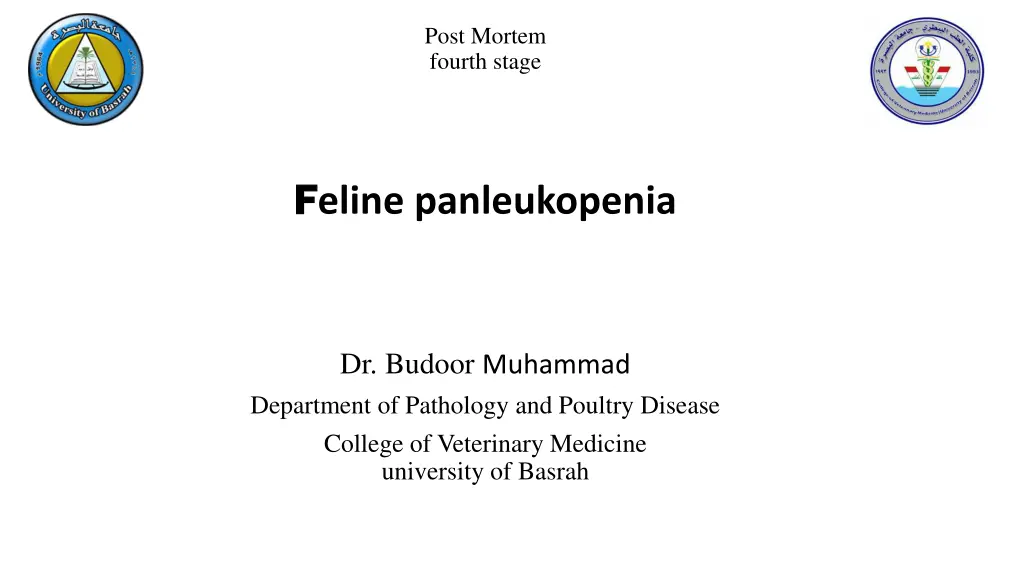
Understanding Feline Panleukopenia: Symptoms, Diagnosis, and Treatment
Learn about Feline Panleukopenia (Feline Distemper), a highly contagious and potentially fatal disease in cats caused by the FPV virus. Discover the epidemiology, clinical signs, and lesions associated with this condition, along with images for visual reference. Proper understanding of this disease is crucial for effective management and prevention.
Download Presentation

Please find below an Image/Link to download the presentation.
The content on the website is provided AS IS for your information and personal use only. It may not be sold, licensed, or shared on other websites without obtaining consent from the author. If you encounter any issues during the download, it is possible that the publisher has removed the file from their server.
You are allowed to download the files provided on this website for personal or commercial use, subject to the condition that they are used lawfully. All files are the property of their respective owners.
The content on the website is provided AS IS for your information and personal use only. It may not be sold, licensed, or shared on other websites without obtaining consent from the author.
E N D
Presentation Transcript
Post Mortem fourth stage F Feline panleukopenia Dr. Budoor Muhammad Department of Pathology and Poultry Disease College of Veterinary Medicine university of Basrah
Feline panleukopenia Feline panleukopenia (also called feline distemper) is a highly contagious, potentially fatal disease of cats caused by the feline panleukopenia virus (FPV, also called feline parvovirus).
Epidemiology Epidemiology Most species of Felids are highly susceptible to infection which is generally endemic in unvaccinated cats. Cats of all ages are susceptible to infection. Disease occurs in young recently-weaned kittens, as maternally-derived antibody levels wane. High rates of virus excretion occur during the acute stages of the disease, mainly in feces but also in saliva, urine, vomitus and blood. Cool, moist, dark environment is most susceptible for this disease. fleas and humans act as mechanical vector for this disease.
Clinical Signs Clinical Signs Most cats with FPV infection have no signs at all and appear normal. Cats that do become ill most often those younger than a year old may have the following: Diarrhea and Vomiting It causes a decrease in the cats white blood cells Fever Depression/lethargy Loss of appetite Dehydration (may appear as sunken eyes or dry gums) Painful bell Affected cats especially kittens also may suddenly die
Dehydration is prominent clinical signs of feline panleukopenia.
Lesions identification of lesions within the intestines, brain and spinal cord, or lymph tissue during necropsy. Intestinal congestion
Intestinal congestion Intestinal congestion
mm diarrhea diarrhea
Intestinal mucosal hemorrhage Intestinal mucosal hemorrhage
